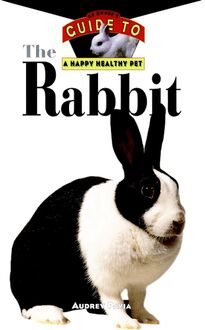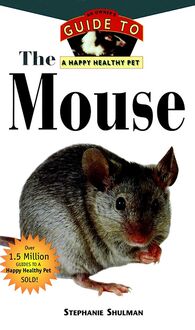-
 Univers
Univers
-
 Ebooks
Ebooks
-
 Livres audio
Livres audio
-
 Presse
Presse
-
 Podcasts
Podcasts
-
 BD
BD
-
 Documents
Documents
-
- Cours
- Révisions
- Ressources pédagogiques
- Sciences de l’éducation
- Manuels scolaires
- Langues
- Travaux de classe
- Annales de BEP
- Etudes supérieures
- Maternelle et primaire
- Fiches de lecture
- Orientation scolaire
- Méthodologie
- Corrigés de devoir
- Annales d’examens et concours
- Annales du bac
- Annales du brevet
- Rapports de stage
La lecture à portée de main
Vous pourrez modifier la taille du texte de cet ouvrage
Découvre YouScribe en t'inscrivant gratuitement
Je m'inscrisDécouvre YouScribe en t'inscrivant gratuitement
Je m'inscrisEn savoir plus
Vous pourrez modifier la taille du texte de cet ouvrage
En savoir plus

Description
PART ONE: Thinking Dog.
1. Instinct.
2. The Dog's Body.
3. The Dog's Intellect.
4. Learning Dog.
PART TWO: Behaving Dog.
5. Socialization.
6. Play.
7. Communication.
8. Social Behavior.
9. Sexual Behavior.
PART THREE: Misbehaving Dog.
10. Misbehavior?
11. Behaving Badly.
12. About Fighting and Biting.
PART FOUR: Beyond the Basics.
13. Recommended Reading and Watching.
Sujets
Informations
| Publié par | Turner Publishing Company |
| Date de parution | 18 mai 2009 |
| Nombre de lectures | 0 |
| EAN13 | 9780470493403 |
| Langue | English |
| Poids de l'ouvrage | 1 Mo |
Informations légales : prix de location à la page 0,0750€. Cette information est donnée uniquement à titre indicatif conformément à la législation en vigueur.
Extrait
Dog Behavior
Howell Book House
Howell Book House A Simon Schuster Macmillan Company 1633 Broadway New York, NY 10019
Copyright 1999 by Howell Book House All rights reserved. No part of this book may be reproduced or transmitted in any form or by any means, electronic or mechanical, including photocopying, recording or by any information storage or retrieval system, without permission in writing from the Publisher.
MACMILLAN is a registered trademark of Macmillan, Inc.
Library of Congress Cataloging-in Publication Data Dunbar, Ian. Dog behavior: an owner s guide to a happy healthy pet/[Ian Dunbar] p. cm. Includes bibliographical references. ISBN 0-87605-236-7
1. Dogs-Behavior. I. Title. SF433.D85 1998 636.7 089689-dc21 98-39314 CIP
Manufactured in the United States of America 10 9 8 7 6 5 4 3
Series Director: Amanda Pisani Assistant Series Director: Jennifer Liberts Book Design: Michele Laseau Cover Design: Iris Jeromnimon Illustration: Jeff Yesh
Photography:
Front cover by Mary Bloom; inset by Winter-Churchill Photography; back cover by Michael A. Schreiber
Cheryl Primeau: 85
Michael A. Schreiber: 2-3, 9,13, 24, 28, 33, 40, 41, 43, 45, 46, 47, 50, 54, 56, 73, 83, 84, 106, 115, 120, 122, 134, 136, 137
Bob Schwartz: 6, 11, 16, 18, 21, 22, 25, 26, 29, 31, 35, 52, 60, 61, 65, 66, 68, 70, 74, 81, 86, 90, 92, 95, 110, 125, 127, 138
Judith Strom: 8, 17, 19, 36, 58, 75, 79, 88, 97, 98, 100-101, 102, 105, 107, 111, 113, 118, 124, 129, 130, 132
Toni Tucker: 62
Jean Wentworth: 7, 14, 38-39, 55,103, 117
Winter-Churchill Photography: Title Page, 5, 12, 27, 64, 77
Production Team: Carrie Allen, Mark Enochs, Clint Lahnen, Dennis Sheehan,
Terri Sheehan
Contents
part one
Thinking Dog
1 Instinct
2 The Dog s Body
3 The Dog s Intellect
4 Learning Dog
part two
Behaving Dog
5 Socialization
6 Play
7 Communication
8 Social Behavior
9 Sexual Behavior
part three
Misbehaving Dog
10 Misbehavior?
11 Behaving Badly
12 About Fighting and Biting
part four
Beyond the Basics
13 Recommended Reading and Watching
chapter 1
Instinct
What makes dogs tick? What makes them behave the way they do? How important are breed differences in temperament? Is good breeding more important than good training? And why are these questions so important? Basically, understanding the forces that shape the dog s development enables us to modify behavior and temperament and prevent otherwise predictable problems. By focusing solely on the genetic causes of behavior, our options are extremely limited and for the most part our hands are tied. However, by emphasizing the role of experience in changing the dog s behavior and temperament, the options are endless.
If we are going to ask dogs to come and live with us, it is only fair that we try our utmost to understand dogs as dogs: To know what to expect from dogs and to respect and provide for their needs. Specifically, to teach dogs how to live with people without causing offense.
Often people experience problems living with each other. Different cultures, different age groups, different sexes and sometimes just different individuals experience difficulty seeing eye to eye. Harmonious living can pose even bigger problems when the individuals are different species.
Between instinct, selective breeding and training, it s no wonder that herding dogs keep such good watch over their flocks .
The dog is an entirely different beast from us humans; it has different customs and different behaviors. Dogs like to bark, chew, dig, mark their surroundings with urine and feces, bury bones and wag their tails. Be-cause of their superior senses, dogs are privy to a much more sophisticated sensory world. Additionally, dogs brains are much more adept than ours at perceiving and reacting to subtle changes in the environment. And as surprising as it may seem, dogs react in characteristically doggy fashion by barking, growling, chewing, chasing, biting and urine-marking.
Living with a dog can be a challenging task, especially if we attempt to take the dogginess out of the dog by suppressing its normal, natural and necessary doggy behaviors. On the other hand, if we anticipate and acknowledge the dog s needs, it becomes easy to nip potential problems in the bud by redirecting otherwise problematic doggy desires to appropriate and acceptable outlets.
The Dog s Predisposition
The development of a dog s temperament and behavioral repertoire depend on species-specific predispostions (instincts), breed stereotypes (selective breeding), individual differences (the luck of the draw) and experiential factors (socialization and training).
Instinctive behaviors reflect the dog s natural inborn predisposition to act like a dog. The notion of instinct reminds us all that dogs are dogs and unless given appropriate guidance, they will grow up to act like dogs. Unfortunately, many old-time dog folk falsely assume that instinctive behavior is the sole product of genetic heredity and is therefore immutable, hard-wired and set in stone. The erroneous notion that instinctive behaviors cannot be changed provides a convenient excuse for lazy (or unknowledgable) people not to try to modify their dogs behavior and temperament. Simply labeling problem behaviors as instincts or drives, rather than attempting to prevent or cure them, is usually an admission of not knowing how to train.
Dobermans and Pugs are very different dogs, but both are indeed dogs. Moreover, each member of a particular breed is an individual. And all dogs need to be trained.
Selective breeding has given rise to a wide variety of breed differences in physical appearance and personality, especially in terms of sociability toward both dogs and people. Some breeds are extremely friendly, some are fearful, others are aloof and yet others tend to be downright standoffish. The breed stereotype offers forewarning of how individuals of the breed are likely to react toward people and other dogs, such that the dog may be socialized accordingly. For example, breeds that have been selectively bred for sensitivity are predisposed to becoming fearful, as they tend to overreact to environmental stimuli. Just as every cloud has a silver lining, every silver lining has its cloud. Every characteristic of a dog s behavior or temperament has both a good side and a bad side. Certainly, sensitivity is a favorable trait for obedience or working dogs, so long as they have been sufficiently socialized. If not, the dog may overact to novel or excessive stimuli.
Every Dog Is Unique
Despite predictable breed stereotypes, each individual dog is unique. Its individuality depends on genetic constitution and experience-both of which are utterly unique for each individual. It is no more possible to recreate identical offspring by repeating a particular breeding with dogs than it is with people.
Selective breeding has produced breeds and individuals that may be predisposed to being sociable, fearful, irritable, irascible or aggressive. Whether these predispositions are manifested, however, depends on whether the dog is socialized and trained. Instincts, breed stereotypes and individual differences all provide an indication of how the dog would be likely to develop if left to its own devices, i.e., without the benefits (or drawbacks) of human intervention. Surely though, no one in their right mind would even consider letting a puppy grow up without appropriate guidance, especially if the dog s size, activity or breed stereotype all indicate the necessity of specialized socialization and training.
Each dog s individual personality is what makes dogs so lovable. Regardless of the breed or breeding, it s socialization and training that make the biggest difference.
There are many differences between the behavioral stereotypes of the various breeds, between the variety of lines within each breed and between the individuals in each kennel line, but none of these differences are greater than the difference between a socialized and an unsocialized dog of any breed and any breeding.
Of all the variables affecting dog behavior and temperament, the quantity and quality of socialization and training exerts the greatest, most immediate, most dramatic and longest lasting effect. Compared with other domestic animals, the dog is Mr. Sociable. Dogs virtually have an instinctive desire to socialize. But they instinct still need to be socialized. Indeed, a dog is only truly domesticated once it has been socialized. An unsocialized dog is little different from a wild animal.
Dogs virtually have an instinctive desire to socialize.
The ultimate behavioral question nearly always comes down to assessing which is more important-genetic heredity (species-specific behaviors, breed stereotypes, the quality of breeding, individual differences at birth) or experience (socialization and training)?
Genes vs. Environment
In theory, both good breeding and a good education are equally important for producing a dog with a solid disposition. However, from the practical viewpoint of raising good dogs, the relative importance of genetic and experiential effects are dependent on whether the individual dog in question is a prospect, or a product, i.e., whether the puppy dog has been conceived yet.
BREEDING AND BEHAVIOR
Breeding dogs that are tractable and friendly is a good first step in producing well-behaved dogs. More important, however, is the opportunity to interact with humans. Regardless of a dog s ancestry, it will not serve as any man s best friend if not given the right socialization and training.
When evaluating breeding prospects, obviously the pair s genetic constitution is the single most important consideration for the prevention of behavior and temperament problems and other faults in the offspring. However, once the breeder has chosen the mating pair, and mating (conception) has taken place, genetic considerations take a back seat. Moreover,
-
 Univers
Univers
-
 Ebooks
Ebooks
-
 Livres audio
Livres audio
-
 Presse
Presse
-
 Podcasts
Podcasts
-
 BD
BD
-
 Documents
Documents
-
Jeunesse
-
Littérature
-
Ressources professionnelles
-
Santé et bien-être
-
Savoirs
-
Education
-
Loisirs et hobbies
-
Art, musique et cinéma
-
Actualité et débat de société
-
Jeunesse
-
Littérature
-
Ressources professionnelles
-
Santé et bien-être
-
Savoirs
-
Education
-
Loisirs et hobbies
-
Art, musique et cinéma
-
Actualité et débat de société
-
Actualités
-
Lifestyle
-
Presse jeunesse
-
Presse professionnelle
-
Pratique
-
Presse sportive
-
Presse internationale
-
Culture & Médias
-
Action et Aventures
-
Science-fiction et Fantasy
-
Société
-
Jeunesse
-
Littérature
-
Ressources professionnelles
-
Santé et bien-être
-
Savoirs
-
Education
-
Loisirs et hobbies
-
Art, musique et cinéma
-
Actualité et débat de société
- Cours
- Révisions
- Ressources pédagogiques
- Sciences de l’éducation
- Manuels scolaires
- Langues
- Travaux de classe
- Annales de BEP
- Etudes supérieures
- Maternelle et primaire
- Fiches de lecture
- Orientation scolaire
- Méthodologie
- Corrigés de devoir
- Annales d’examens et concours
- Annales du bac
- Annales du brevet
- Rapports de stage




















